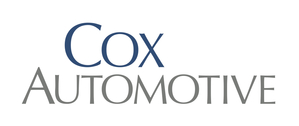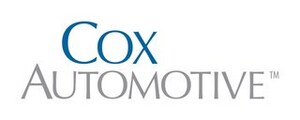Despite Robust Sales, U.S. Auto Dealers Feeling Less Optimistic For Summer Sales
Cox Automotive Dealer Sentiment Index shows many U.S. dealers believe the best times in current upward cycle may soon be in the rearview mirror
ATLANTA, June 11, 2018 /PRNewswire/ -- Overall, U.S. automobile dealers are more positive than negative when describing current market conditions, according to the Q2 2018 Cox Automotive Dealer Sentiment Index (CADSI) released today. However, while current sentiment improved, expectations for the next quarter deteriorated substantially compared to the optimism measured in Q1.
"The biggest concern coming from this quarter's survey is that expectations for the market moving into the summer have diminished substantially," noted Cox Automotive Chief Economist Jonathan Smoke.
In Q1 2018, an index rating of 70 indicated a substantial majority of dealers were extremely optimistic about the coming months; optimism that was driven largely by very positive views of the tax reform enacted at the end of 2017. But the euphoria has diminished. The majority remain positive but indicate that costs continue to increase, inventory levels are now a challenge and higher interest rates are beginning to weigh negatively on the business.
"The future view is our canary in the coal mine," added Smoke. "The good news is, the canary is not dead. But dealers are getting a big dose of reality in the form of rising costs and shoppers who are feeling financial stress. Many dealers are starting to believe the best times in this cycle may soon be behind us. If nothing else, they've clearly lost much of the optimism that brought them into this quarter."
Derived from a survey Cox Automotive issues to a representative sample of franchised and independent auto dealers, the CADSI measures U.S. dealer perceptions of current retail auto sales and sales expectations for the next three months as "strong," "average" or "weak." The quarterly survey also asks dealers to rate new-car sales and used-car sales separately, with a variety of key drivers including "Customer Traffic." Responses are used to calculate an index by which any number over 50 indicates that more dealers view conditions as strong rather than weak.
Market View: Now and Into the Future
The current market index is 51, up two points from the Q1 reading and the highest reading since the survey began in Q2 2017.1 More dealers were also positive on "Customer Traffic" in Q2 than they were in Q1, with an index rating of 40, up from 35 earlier this year.
Looking ahead at the next three months—the important summer selling season—an index score of 56 indicates more dealers are expecting conditions to be strong compared to those who think it will be weak.
However, the score of 56 is down significantly from the Q1 index score of 70. The big decline in overall optimism for the next 90 days was largely driven by a substantial decline in independent dealers' optimism, who registered a score of 70 in Q1, but came in at a barely positive 52 this quarter. For franchised dealers, the Q1 score of 73 dropped to 69 in Q2.
Perceptions of the current new-car sales environment by franchised dealers remains positive, but the index declined as well, falling from 65 in Q1 to 59 in Q2.
With used-vehicle sales, the index did not register a significant change, declining only one point, from 56 to 55. For franchised dealers, used-vehicle sales remain a bright spot, with the index increasing from 69 to 72, meaning franchised dealers are more positive on used-vehicle sales in Q2 than they were in Q1 and more positive on used than new.
Independent dealers, locations that only sell used cars, however, are far more negative on the current sales environment, with an index score of 50. Inventory is likely one reason. In Q2, the used-vehicle inventory sentiment for independents dropped to 45, down from 58 in Q1. Likewise, "Limited Inventory" moved up to number two from number four last quarter as a top factor holding back business for independents.
In the survey, one anonymous independent dealer commenting on current market conditions noted, "It is weak for dealers like me that sell late-model, low-mileage preowned vehicles because the new dealers in my area have substantially increased their used-vehicle inventory. They are better equipped to obtain financing for their customers than I am."
Across all regions, franchised dealers in the Northeast were most positive, with dealers in the West least positive. Similarly, the Northeast dealers were most optimistic about the next quarter, likely encouraged by the fact Northeast dealers also report the most significant gain in "Customer Traffic." The Northeast also registered the highest score on staffing levels, indicating they continue to grow their workforce the most.
Factors Holding Back the Business
When asked about factors holding back the business, dealers continue to point to "Market Conditions" as the top factor. "Limited Inventory" jumped up from number five in Q1 to a tie at number two with "Credit Availability for Consumers," which remained constant quarter-over-quarter. "Competition" and "Expenses" rounded out the top five.
Outside of the top five, "Interest Rates" had the largest increase in the percentage of dealers citing it as a negative factor, increasing from 9 percent in Q1 to 16 percent in Q2. "Interest Rates" moved up to number 6 in the list of factors holding back the business in Q2. This move was mostly expected, as auto loan rates have increased substantially this year.
Having "Too Much Retail Inventory" continues to rank low on the list of factors holding back the business. In fact, in Q2, there was a substantial uptick in franchised dealers reporting that new-vehicle inventory levels are declining.
Tax Reform No Longer an Overwhelming Positive
Compared to Q1, dealers have shifted their expectations for recent tax reform. Whereas in Q1 a vast majority of dealers expected a positive impact on their business going forward, a majority of dealers now indicate they have experienced no impact. This shift likely contributed to the significant decline in overall optimism for the coming months.
Specifically, in Q1, the index showed an overwhelmingly-positive view of the expected impact of tax reform, with an index score of 77. In Q2, the tax reform index dropped to 61. While technically that means dealers are still positive about tax reform, the decline was driven by a substantial increase in the percentage of dealers who now expect tax reform to have no impact on their business (64 percent in Q2 versus 36 percent in Q1).
Segmenting the results by region, we continue to see key differences. While all regions saw declining views of the impact of tax reform compared to last quarter, the West was the least enthusiastic in Q2 while the Midwest remained the most positive.
Cox Automotive Dealer Sentiment Index Methodology
Data for the Cox Automotive Dealer Sentiment Index is gathered via online surveys. The Q2 results were based on 1,053 dealer respondents across the country from April 30 to May 14, 2018. Dealer responses were weighted by dealership type and volume of sales to be representative of the national dealer population.
You can download the full results of the Q2 2018 Cox Automotive Dealer Sentiment Index here:
https://www.coxautoinc.com/news/CADSI-Q218
About Cox Automotive
Cox Automotive Inc. makes buying, selling and owning cars easier for everyone. The global company's 34,000-plus team members and family of brands, including Autotrader®, Dealer.com®, Dealertrack®, Kelley Blue Book®, Manheim®, NextGear Capital®, VinSolutions®, vAuto® and Xtime®, are passionate about helping millions of car shoppers, 40,000 auto dealer clients across 100+ countries and many others throughout the automotive industry thrive for generations to come. Cox Automotive is a subsidiary of Cox Enterprises Inc., a privately-owned, Atlanta-based company with revenues exceeding $20 billion. www.coxautoinc.com
1 While the CADSI was first published in Q3 2017, an initial survey was fielded in Q2 2017.
SOURCE Cox Automotive
Related Links
WANT YOUR COMPANY'S NEWS FEATURED ON PRNEWSWIRE.COM?
Newsrooms &
Influencers
Digital Media
Outlets
Journalists
Opted In






Share this article